|
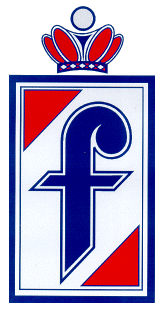
BATTISTA
PININFARINA
Born
in Turin on November 2 1893, Battista Farina was the tenth of eleven
children, and was immediately given the nickname ‘Pinin’ which means
approximately 'baby of the family’, a nickname which stuck. Whilst Pinin
was very young, Giovanni, one of his elder brothers, became an apprentice
to a coachbuilder. He then set up his own workshop, repairing cars and
horse drawn vehicles, which went on to become, in 1917, the well known
Stabilimenti Farina.
Along
with two other brothers, Pinin also went to work for the company, despite
his young age, and became responsible for the design and publicity. He met
many famous and influential people, and was even offered a job by Henry
Ford when travelling in the USA, but opted to return to Turin and get
married.
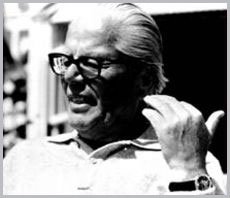
Battista
“Pinin” Farina
In 1961, the President of the Italian Republic, acting on a proposal made
by the Minister of Justice, authorized the change of his last name to
Pininfarina in consideration of his achievements in social and industrial
activities.
At age 11 he began working in his brother Giovanni's bodyshop, the "Stabilimenti
Farina". During the First World War he personally supervised the
construction of the "Aviatic" trainer planes, for which he
received a commendation from the Office of Military Aviation.
In 1920, he went to the United States to see America and judge first hand
the great developments in that country. In Detroit he met with Henry Ford,
who asked him to stay in America and work for Ford Motor Company, but
Pininfarina preferred to return to Italy. However, this American visit was
of great value, not so much for new technological information as for the
glimpse of the enthusiasm that private enterprise instilled in the
American people. The feverish pace of the American life impressed him and
encouraged him to take up the challenge of his lifetime.
In
1920, he married Rosa Copasso. They had two children, Gianna, born in 1922
and Sergio, born in 1926. Pininfarina always showed great interest
in man's tenacious efforts to develop technology. He felt drawn by the
automobile and was fascinated by aeronautics and flight. In 1921 he drove
the winning vehicle in the "Aosta-Gran San Bernardo" race,
setting the best time for all categories of vehicles in competition, even
though the car he drove was his own personal vehicle and not a racing
sports model. His record was unbroken for 11 years.
In 1930, he left "Stabilimenti Farina" and founded ''Carrozzeria
Pinin Farina".
His plan was to build special car bodies, but he aimed at eventually
expanding beyond the level of manual craftsmanship. He wanted to transform
car body manufacturing into an independent industry, giving employment to
increasing numbers of people. With this in mind, he equipped the factory
with new industrial tools and procedures. In brief time he had assembled a
production line able to turn out small series of vehicles at a rythm of
7/8 vehicles per day.
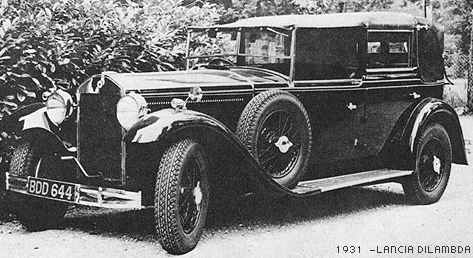
Even before the Second World War, his plant in Corso Trapani had produced
car bodies of revolutionary design, prefiguring the lines automobiles
would have in the future. Before the war Pininfarina had established
contacts with foreign car companies: General Motors sought his cooperation
as did Renault. The war interrupted these contacts.
After the war, Pininfarina designed and produced, among other things, the
1946 "Cisitalia" shown in the Museum of Modern Art in New York
as "one of the eight outstanding cars of our time". It was
defined as the best expression of simplicity and beauty of design in the
automotive field. It set the standards for the post-war era automobile.
Twenty years later, the Museum of Modern Art in New York would present
another Pininfarina vehicle, the "Sigma", a prototype of safety
car that would receive praise world-wide and especially in the United
States.
Immediately
after the war, several automotive manufacturers opened talks with
Pininfarina. Collaboration began with the American Company, Nash Motor of
Detroit (now the American Motors Co.). In 1952, Pininfarina returned to
the United States for the unveiling of the "Ambassador", which
he had designed, and the “Nash Healey”, planned and built in limited
series at his Turin plant. He was warmly welcomed and showered with
manifestations of respect and esteem.
That was the first time in the history of American automobile companies
that the name of a designer became famous. In the following years
many automotive manufacturers would turn to him for the planning of new
models for the assembly line.
In 1958, Pininfarina completed the costruction of a new plant, built
according to the most modern standards, covering an area of 75,000 sqm.
The covered surface was 40,000 sqm. A series of subsequent industrial
expansions brought the surface area of the grounds to 102,500 sqm, 50,000
of which are covered. This meant a notable increase in production and
personnel.
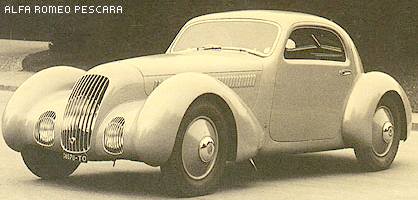
In 1961, after 50 years of activity, Pininfarina turned over the direction
of the firm to his son, Sergio, and his son-in-law, Renzo Carli. This
change, nonetheless, assured the continuation of Pinin's work, since they
took place as designers as well as industrial managers.
Pininfarina travelled widely, made films, but above all, he dedicated his
time to cultural and charitable works. For the celebration of the
Centenary of the Unification of Italy, he presided over the
"Fashion-Style Costume Show", highlighting the development of
man and his environment from the "belle-epoque" to the missile
era.
In 1964, a Professional and Recreational Complex in Grugliasco was opened.
Pininfarina instigated this complex as a demonstration of his enthusiasm
for all that could contribute to the cultural and professional formation
of young workers. In 1966, about one month before his death
(happened on April 3 1966), Pininfarina appears in public at the
inauguration of the Pininfarina Studies and Research Center, sharing the
occasion with the President of the Republic.
Last among the many honors and tributes he received during his life,
Pininfarina received the "Légion d'Honneur” from the General De
Gaulle. Over his sixty years of professional activity, Pininfarina was
named "Cavaliere del Lavoro” and "Honorary Member of the Royal
Society of Arts of London" as "Honorary Royal Designer for
Industry", He was later named "Fellow" of the same Society.
King Baldovino of Belgium decorated him, at the suggestion of the Union
Professionnelle du Ministère des Affaires Economiques. Pininfarina
was named “Honorary Member” of the Engineer and Architect Society of
Turin, which later granted him the “Premio Torino”.
He received the Gran Premio Nazionale Compasso d'Oro. He received
recognition from the Paris Society for the Encouragement of Research and
Invention, the “Gran Croce con Placca” of the Order of Malta, a degree
“Honoris Causa” from the faculty of Architecture at the Turin
Polytechnic Institute. The President of the Italian Republic conferred
upon him the gold medal for education, culture and art. Also, during
his trip around the world, Pininfarina was given a golden key to the city
of Detroit by its major, with honorary citizenship.
SERGIO
PININFARINA
-
Pininfarina
Sergio
-
parents:
late Pininfarina Battista and late Rosa Copasso
-
born:
Turin, Italy, September 8, 1926
-
married:
1951, with Giorgia Gianolio
-
children:
Lorenza, Andrea, Paol
Graduated
in mechanical engineering from the Polytechnic of Torino in 1950, he began
his career in the family firm, “Carrozzeria Pinin Farina”; in 1960, he
undertook the responsibility of General Manager of the firm; in 1961 he
became also Managing Director and in 1966, at his father’s death, he
took over the Chairmanship of the Company. In 1961, the President of
the Italian Republic, Giovanni Gronchi, changed by decree the name Farina
in Pininfarina.
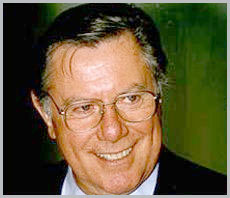
Sergio
Pininfarina
From 1974 to 1977 he has been professor of “Car Body Design” at the
Polytechnic of Torino.During his more than fifty years of work, the
Pininfarina Group has enjoyed a constant increase in technical and
production development: the turnover augmented of 95 times from 8.2
million of Euros (650 million of Lire of that time) to 779 million of
Euros; the units produced of 82 times (from 524 to more than 43.000); the
number of employees his more than quadruplicated (from 560 to more than
2400). At now it has several plants, in Italy and abroad.
The
most significant stages of the company’s growth are:
• from 1955 to 1958, the planning and the construction of new facilities
at Grugliasco (Torino). The total surface was 22,700 square metres and now
is 66,200 square metres.
• in 1964, the construction of the new Studies and Research Centre
(total surface 4,300 square metres), which is the evolution of the
previous Reparto Esperienze, inaugurated in 1966.
• in 1967, the Centre D.E.A. (Centre of three-dimensional measuring and
drawing machines) was inaugurated and continued to grow becoming C.C.D.
(automated Calculation and Design Centre) in 1971;
• in 1972, the Wind Tunnel on 1:1 scale started its activities, the
first in Italy and one of the few in the world;
• in 1979, Pininfarina took the form of an holding Company:
• in 1982, a new company “Pininfarina Studi e Ricerche S.p.A.” –
named from January 2002 Pininfarina Ricerca e Sviluppo S.p.A. - was
settled at Cambiano (Torino), in order to carry over in an independent way
the design and research activities; the total surface was 9,100 square
metres and now is 10,200 square metres.
• in 1986, a new plant in San Giorgio Canavese - near Turin - started
operating, to house the final assembly and trimming of some of the models
produced; the total surface was 23,500 square metres and now is 35,300
square metres plus a test track
• in the same year, Pininfarina successfully entered the Italian Stock
Exchange
• in 1987, with the setting up the company “Pininfarina Extra S.r.l.”,
the Pininfarina Group enlarged its design activities towards all the areas
of the industrial design, beyond the traditional one of the means of
transport.
• in 1991, throughout the acquisition of two Companies in Germany
operating in the engineering and model making field, “Pininfarina
Deutschland GmbH” was set up.
• in 1997 a new plant in Bairo Canavese is acquired, where from 1999 SUV
Mitsubishi will be manufactured; the total surface was 17,100 square
metres and now is 26,100 square metres
• in 2002 it is inaugurated in Cambiano the new Engineering Centre, to
offer the market this sector of activity; the total surface is 6,900
square metres
• in September 2003, it is finalised the acquisition of Matra
Automobile’s engineering activities, operation that will contribute to
strengthening Pininfarina’s position in the new product development
sector.
• in the same month, it has been established a joint venture with Volvo
Car Corporation with the aim to develop and manufacture Volvo’s next
generation convertible: the new Company “Pininfarina Sverige AB” is
responsible for all operation at the Uddevalla plant.
• on January 1st, 2004 takes place the merger by absorption of
Pininfarina Ricerca e Sviluppo S.p.A. and Industrie Pininfarina S.p.A.
into Pininfarina S.p.A. with the purpose of concentrating all of the
activities and services that the Pininfarina Group can perform and offer
to its customers in a single company structured by business units.
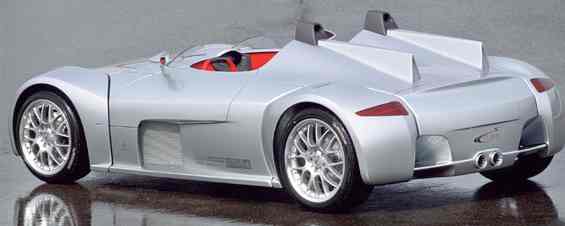
Pininfarina
'Enjoy'
In
1930 Pinin left his brothers company and set up on his own, the
Carrozzeria Pinin Farina. He was helped in this move by two people, a rich
aunt who assisted financially, and Vincenzo Lancia who, as well as being a
partner in the new firm, promised work and also gave moral support. They
began with around 90 employees in a factory at Corso Trapani 107, making
one-off prototypes and very small runs of 5 to 10 special models for
direct sale. Predictably the first cars were mainly for Italian companies,
Lancia, Fiat, Alfa Romeo, Isotta Fraschini etc, but 1931 also saw a
Cadillac and 1932 a Mercedes Benz passing through their workshops. Around
the same time aerodynamics began to emerge as a force and it did not take
long for this to influence the work of Pinin. A 1933 Lancia Astura was one
of his earliest aerodynamic designs.
The
company continued to expand and become more famous in many countries, by
1939 he employed around 500 people and in that year produced 800 cars. The
war saw all effort turning to military equipment, ambulances, trucks,
aeroplane parts, boats and even cookers. 1945 saw Pinin resuming his work
without delay. Despite a fire in 1946 which destroyed the premesis, his
creativity was undented, witness the Cisitalia 202 of 1947.
The
1950s saw may significant events for the Carrozzeria Pinin Farina. Work
with Nash saw both volume production and a noticeable entrance into the US
market, cooperation began with Peugeot and more famously with Ferrari, and
in 1958 the company relocated to a new site at Grugliasco, just outside
Turin. Numerous famous models emerged in these years based on the
Lancia Aurelia, Alfa Romeo 1900 and 6C2500, Fiat 1100, 1400 and , Maserati
A6 and many Ferraris to name but a few. In 1960 alone they produced over
11,000 car bodies, including mass produced bodies for the major
manufacturers, small runs of specials and various concept cars and
prototypes.
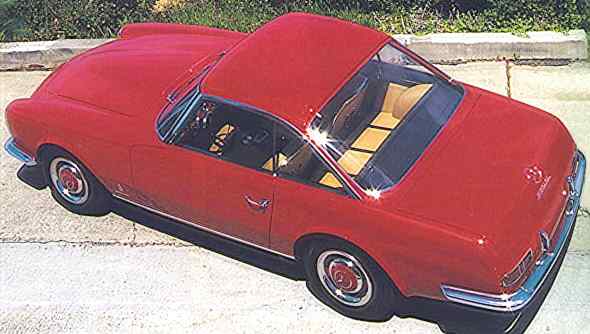
Just
a year after the introduction of the Mercedes 230 SL a unique redesign was
unveiled at the 1964 Paris Motor Show: the 230 SL coupe by Pininfarina.
Currently the original design by Paul Bracq is regarded as a masterpiece,
but at the time of its introduction it didn't found that much acclaim. The
remarkable and upright Chinese Pagoda-style roof needed some getting used
to, as did the squarish and broad lines of the bodywork. Contemporary
reviews stated that the car lacked the finesse and elegance of the top
class Italian sports cars.
The renowned Italian coach builder Pininfarina, most famous for its
Ferrari designs, set out to create a 230 SL which incorporated the finesse
and elegance that was missed by some in the original design. The result
was very appealing but seemingly not convincing enough to go into
production. It remained a one-off and although still extant, surrounded by
mysteries concerning its reason for creation and why it disappeared so
soon.
The
1960s were the heyday of special bodied cars based on mass production
models. There were a number of coachbuilders around in Europe who made a
living of selling often hand crafted body styles fitted on chassis of
popular or premium cars. Sometimes these were show cars intended to
attract attention at important car shows and sold afterwards to the
highest bidder, more often these cars were build to order for rich
customers and very rarely these specials turned out so good that they were
taken into (limited) production.
Coachbuilder Pininfarina had the habit of introducing a number of special
bodied cars each year at car shows as a styling exercise, a company
showcase and of course to attract orders from the industry or individual
customers. In that respect the 230 SL Pininfarina coupe was shown at the
1964 Paris Motor Show.
The
family name Farina was changed by deed poll to Pininfarina in 1961 and the
company name followed suit. Growth continued, with over 14,000 bodies
built in 1962 and nearly 20,000 in the following year. By that time the
company was employing over 1,600 people. In
1966 Battista Pininfarina died and control of the company passed to the
already well prepared Sergio (his son) and Renzo Carli (son-in-law).
The
same year saw a separate R&D department being established, including
the capability to produce complete prototypes. The aim of remaining at the
forefront of design technology saw the inaugration in November 1972 of the
Pininfarina windtunnel, the first in Italy and one of the first in the
world, which could take a full scale model. With this new facility the
1970s saw a variety of concept cars developed therein emerge, such as the
Ferrari based CR25 of 1974. The fuel crisis of those years also saw early
electric powered cars being developed.
A
steady stream of both prototypes and mass produced cars left the
Pininfarina establishment through the 1970s and 80s. Notable amongst the
latter category was the Fiat 124
Spider, which began production in 1974 and by 1979 had already seen
150,000 being produced. Other notable designs included the Lancia Gamma
(saloon and coupe), Beta
Montecarlo, Ferrari 308
and Mondial,
whilst the 80s saw Pininfarina diversifying into both construction
machinery, buses and other automotive related fields, and new areas
unrelated to the car such as sunglasses.
The
next major step for the company came in 1982 when the R&D centre was
moved to a new, separate location, and became operationally a separate
company. This became the “Pininfarina Studi e Ricerche SpA” alongside
the already formed “Industrie Pininfarina SpA” which was responsible
for mass-production.
The
1980s also saw co-operation with Honda start, whilst for the Italian
automotive industry, apart from the Alfa
33 Sportwagon, Pininfarina also penned the slightly more extravagant GTO
and Testarossa.
In 1987 Pininfarina opened a third site at San Giorgio. Designed primarily
to produce the Cadillac Allante it is located near Turin airport in order
to ease the transport of the finished bodies to their US destination, done
by airlift.
By
1989 the Pininfarina Group employed 1700 people and produced around 30,000
cars. Arguably the latest stage in their development is the production of
cars which they have not designed, such as the Fiat Coupé,
which demonstrates the diversity the group has achieved. Many more cars
have Pininfarina influence in design, development and prototype production
than are publicly acknowledged.
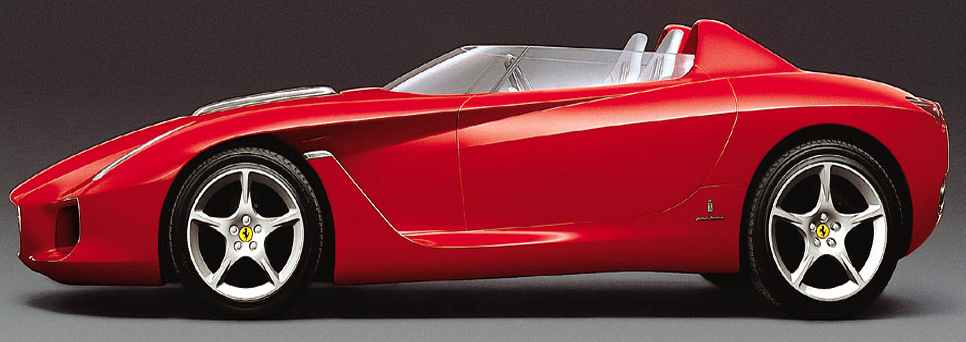
Pininfarina
'Rossa'
Cars
(both concept and production, based on Italian cars) by Pininfarina
include (this list is not comprehensive) :
|
Alfa
Romeo 6C2300 'Pescara' Coupe
|
1935
|
|
Lancia
Astura 'Tipo Bocca'
|
1936
|
|
Lancia
Berlinetta Aerodynamica (Aprilia based)
|
1937
|
|
Alfa
Romeo 6C2300
|
1938
|
|
Alfa
Romeo 6C2500 cabriolet (various)
|
1946
& 47
|
|
Cisitalia
202
|
1947
|
|
Alfa
Romeo 6C2500SS coupe
|
1947
|
|
Alfa
Romeo 6C2500 berlinas
|
1947
|
|
Alfa
Romeo 6C2500 Limousine Ministeriale
|
|
|
Alfa
Romeo 6C2500 Coupe
|
1948
& 50
|
|
Fiat
1500 Coupe
|
1950
|
|
Lancia
Aurelia Coupe
|
1951
|
|
Alfa
Romeo 1900 cabriolet
|
1951
|
|
Alfa
Romeo 1900 Coupe
|
1953
|
|
Lancia
PF2000 (Aurelia based)
|
1953
|
|
Maserati
A6 GCS
|
1954
|
|
Ferrari
375MM Coupe
|
1954
|
|
Alfa
Romeo Giulietta Spider
|
1955
|
|
Ferrari
250GT Competizione
|
1955
|
|
Lancia
Floride I & II
|
1955
& 57
|
|
Fiat
Abarth 750 Record
|
1957
|
|
Lancia
Flaminia
|
1957
|
|
Alfa
Romeo Spider Super Sport
|
1959
|
|
Fiat
1200 Cabriolet
|
1959
|
|
Alfa
Romeo 6C 3500 CM
|
1960
|
|
Ferrarina
/ ASA prototype
|
1961
|
|
Alfa
Romeo Duetto
|
1966
|
|
Alfa
Romeo 2000 Spider hardtop
|
|
|
Alfa
Romeo 2600 Spider & Coupe
|
1963
|
|
Fiat
1500 & 1600S Spider
|
1963
|
|
Lancia
Flavia Coupe
|
1962
|
|
Fiat
124 Spider
|
1966
|
|
Fiat
Dino Spider
|
1966
|
|
Dino
206 GT Special
|
1965
|
|
Dino
Berlinetta Speciale
|
1965
|
|
Alfa
Romeo Giulia 1600 Sport
|
1965
|
|
Ferrari
365P
|
1966
|
|
Dino
206SP
|
1967
|
|
Dino
Competizione
|
1967
|
|
Ferrari
P5
|
|
|
Ferrari
P6
|
1968
|
|
Ferrari
512S
|
1969
|
|
Abarth
2000 Prototipo
|
1969
|
|
PF
Modulo
|
1970
|
|
Ferrari
CR25
|
|
|
Alfa
Romeo 33 Spider
|
1968
& 71
|
|
Alfa
Romeo 33 Coupe
|
1969
|
|
Alfa
Romeo Alfetta Spider
|
1972
|
|
Ferrari
Daytona
|
1968
|
|
Ferrari
Berlinetta Boxer
|
1971
|
|
Ferrari
308
|
1975
|
|
Ferrari
365 GT/4
|
1972
|
|
Ferrari
400 & 412
|
1976
& 85
|
|
Fiat
130 Coupe
|
1971
|
|
Fiat
Maremma (130 estate)
|
|
|
Lancia
Beta Montecarlo
|
1975
|
|
Lancia
Gamma berlina & coupe
|
1976
|
|
Lancia
037 'Rally'
|
1982
|
|
Lancia
Gamma Scala & Oligiata
|
1982
|
|
Alfa
33
|
1983
|
|
Fiat
Ritmo 125TC Coupe
|
1983
|
|
Alfa
Romeo 164
|
1988
|
|
HIT
(Integrale based)
|
1988
|
|
Mythos
(Testarossa based)
|
1989
|
|
Fiat
Song
|
1996
|
|
Dardo
(156 Spider)
|
1998
|
|
Rossa
(550 Maranello based)
|
2000
|
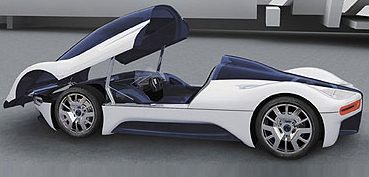
Pininfarina
has a great tradition in the creative, technical and industrial fields,
having been a partner in long-standing collaboration agreements, first and
foremost its successful partnerships with Ferrari and Peugeot, dating back
50 years. And when Pininfarina began working with younger manufacturers
such as the Japanese, it established a stable relationship with Honda that
has now been in existence over 25 years. The will and ability to create
lasting agreements does not mean that the company has lost interest in the
new evolutionary trends in the car, or in an international approach to the
market. In the 1950s the company founder Pinin Farina was the testimonial
for the launch of the Nash-Healey in the United States, and today
Pininfarina designs and develops cars for the Chinese market, with the aim
to establish another long-term collaboration agreement. However there are
a number of manufacturers with whom Pininfarina has never worked, and the
page of the cars that might have been is still blank.
The concentration of car brands and car makers that began several years
ago has radically changed the panorama of the car market, extending the
range of opportunities for collaboration at different levels for an
independent design house like Pininfarina.
In particular, Peugeot is no longer just a car maker, but an independent
manufacturer, PSA, with two distinct brands: Peugeot on one side, with
historical and strategic links with Pininfarina, and Citroën on the
other, a name that evokes legendary cars that made their mark for
innovative technical and styling content: today the dream of realising a
Citroën has come true with the OSÉE, a very particular project, through
which Pininfarina aimed to demonstrate its strategic interest in being
considered as a potential all-round partner by PSA, for all its product
ranges, at every possible level of collaboration: design, engineering and
the production of niche models.
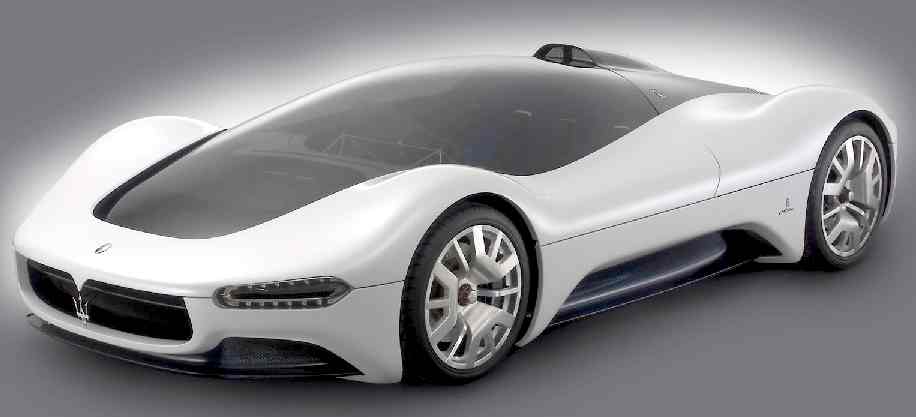
Pininfarina
Birdcage 2005
Turin,
June 23 2005. The Maserati Birdcage 75th, the prototype which commemorates
the 75th anniversary of Pininfarina, is to take part in the Supercar Run
to be held during the Goodwood Festival of Speed scheduled for June 24 to
26.
Based on Maserati tradition and cutting edge mechanical technology, and
created in collaboration with Motorola, the Maserati Birdcage 75th won the
“Best Concept” award in the Editors’ Choice Awards at the 2005
Geneva Motor Show, where it made its debut, and made it onto the list of
the 10 “coolest concept cars” of 2005 drawn up by Forbes.
Other cars taking part in the Goodwood Festival include the Alfa Romeo
Brera, a 2+2 coupé developed in collaboration with Italdesign-Giugiaro
and set to be produced by Pininfarina from the second half of 2005.
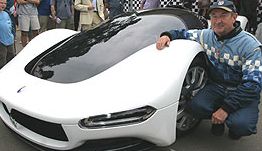
Pink Floyd drummer Nick Mason, Maserati Birdcage 75th
Goodwood
Festival of Speed
Please
click on the links above to find out about these famous automotive
makers. If your company is not included and you would like to be
listed, please let us know.
UK
VEHICLE INSURANCE ONLINE A - Z
No
matter what car, van or bike you drive, we're all looking for great
value and quality in our UK motor insurance? But who is the best
- who is the cheapest and who offers the great service in the event of
a claim?
See
the insurance companies below who claim to offer competitive cover at
sensible prices, our
guide to the jargon and tips for cutting your quote - Good
Luck:-
Automotive
Prehistory Links
CONTACTS
A
taste for adventure
capitalists
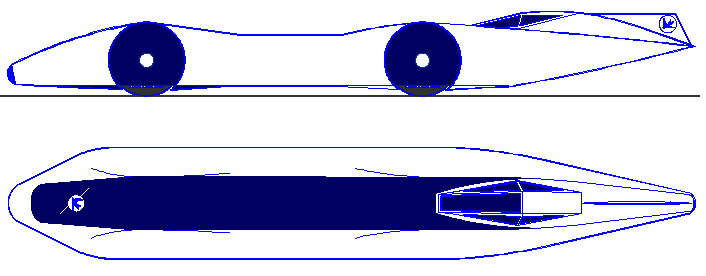
The
world's fastest electric car: 350mph + using energy from nature
|











